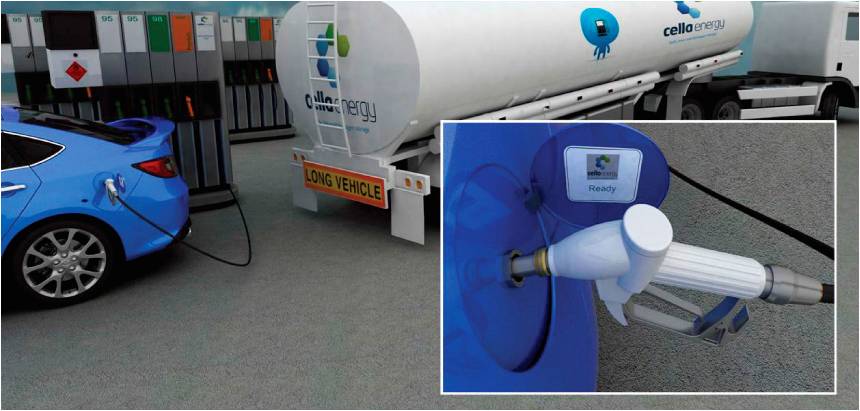Filling up at the pumps with hydrogen instead of petrol has moved a step closer to reality with the launch of a this new company which has the technology to make it happen.
Hydrogen, which produces only pure water when burned, is considered an ideal solution to cutting carbon emissions from petrol, which are estimated to cause 25 per cent of all carbon releases. But, until now, attempts to store it have not been consumer friendly and have prevented it seeing widespread use.
“In some senses hydrogen is the perfect fuel; it has three times more energy than petrol per unit of weight, and when it burns it produces nothing but water,” said Professor Stephen Bennington, chief scientist on the project. “But currently the only way to pack it into a vehicle is to use very high pressures or very low temperatures, both of which are expensive to do. Our new hydrogen storage materials offer real potential for running cars, planes and other vehicles that currently use hydrocarbons on hydrogen, with little extra cost and no extra inconvenience to the driver.”
Cella Energy is the first spin-out from the ISIS Neutron Source at the STFC Rutherford Appleton Laboratory. The company has already gained a major investor, specialist chemical company Thomas Swan & Co Ltd who signed an agreement on 24 January 2011, but the company is seeking further partners to help commercialise their products.
Stephen Voller, the new CEO of Cella Energy Ltd said; “Consumers want to be able to travel 300-400 miles before they have to refuel. And when they do have to fill up they want to be able to do it as quickly as possible. Existing hydrogen storage methods do not meet these consumer expectations, but the ones we are developing have the potential to do just this”.
Tim Bestwick, Director STFC Innovations Limited said; “We’re delighted that Thomas Swan & Co Ltd has chosen to invest in Cella. We believe they will be a great partner with nearly 90 years of experience in making high performance chemical products including nanomaterials.”

Filling up your car with hydrogen fuel instead of petrol is expected to be routine by 2020 using technology from ISIS spin-out company Cella Energy
View full-size image
How it works

Low-cost coaxial electrospinning or electrospraying traps hydride inside a nano-porous polymer coating. The tiny micro-fibres are 30 times smaller than a human hair and form a tissue-like material that is safe to handle in air. The new material contains as much hydrogen for a given weight as the high pressure tanks currently used to store hydrogen and can also be made in the form of micro beads that can be poured and pumped like a liquid.
The ISIS team has worked with colleagues at the London Centre for Nanotechnology at University College London and the University of Oxford and developed a way of making tiny micro-fibres 30 times smaller than a human hair. These form a tissue-like material that is safe to handle in air.
The new material contains as much hydrogen for a given weight as the high pressure tanks currently used to store hydrogen and can also be made in the form of micro beads that can be poured and pumped like a liquid. It could be used to fill up tanks in cars and aeroplanes in a very similar way to current fuels, but crucially without producing the carbon emissions.
The low-cost process called coaxial electrospinning or electrospraying can trap a complex chemical hydride inside a nano-porous polymer that speeds up the kinetics of hydrogen desorption, reduces the temperature at which the desorption occurs and filters out many if not all of the damaging chemicals. It also protects the hydrides from oxygen and water, making it possible to handle it in air.
The electospinning process is simple and industrially scalable, and produces an inexpensive material that operates at low pressures and temperatures and has sufficiently high hydrogen concentration and rapid hydrogen release to be useful for transport applications.
Cella's current composite material uses ammonia borane NH3BH3 as the hydride and polystyrene as the polymer nano-scaffold encpasulating the hydride. it starts releasing hydrogen around 80°C. Cella is also working on other hydride materials with slightly lower hydrogen content but where it is possible to cycle them into the hydride phase many hundreds of times. These hydrides will be encapsulated in hydrogen permeable high-temperature polymers based on polyimide.
Martyn Bull
Research date: January 2011
Further Information
Visit the Cella Energy website for more information about emission-free hydrogen fuel technologies:
Cella Energy
